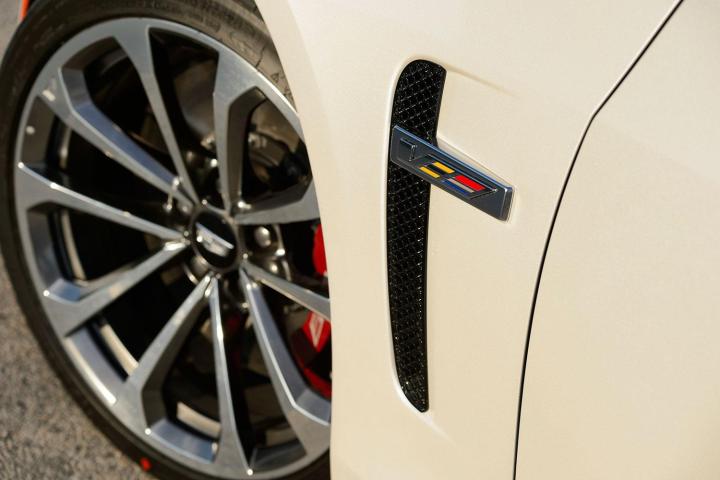
In the early 2000s, Cadillac decided to stop peddling cars best suited to Florida retirees, and made a concerted effort to take on German luxury automakers. Since BMW and Mercedes-Benz had their M and AMG performance divisions, respectively, Cadillac decided to make one of its own. The Cadillac V-Series has now been around for 15 years, and it’s about to get bigger. Cadillac has confirmed that the new CT5 and CT4 sedans will get V-Series performance variants.
The CT5-V and CT4-V, as they will likely be called, were briefly mentioned at the bottom of a press release waxing nostalgically about the performance sub-brand’s 15-year history. Cadillac didn’t provide any details on the two new sports sedans, only saying that they will be unveiled May 30 in Detroit. The General Motors luxury brand hasn’t even shown the standard version of the CT4 yet, while the CT5 made its public debut at the 2019 New York Auto Show in April. The CT5 is the larger of the two, making it a de facto replacement for the current Cadillac CTS. The CT4 will likely replace the ATS.
Cadillac’s V-Series has come a long way over the past decade and a half. The original CTS-V launched in 2004 with a 5.7-liter Corvette-sourced V8 making 400 horsepower, which was channeled to the rear wheels through a six-speed manual transmission. The current-generation CTS-V also gets its engine from the Corvette: it uses the 6.2-liter supercharged V8 from the Z06 version of Chevy’s sports car. That engine develops a titanic 640 hp, although you can’t get it with a manual transmission.
American muscle in an expensive suit has been the V-Series calling card. Cadillac stuffed big V8s into the STS sedan and XLR convertible. It made every automotive journalist’s dreams come true with a supercharged V8 wagon version of the second-generation CTS-V, as well as a distinctive-looking coupe. Cadillac opted for a smaller 3.6-liter twin-turbocharged V6 for the ATS-V coupe and sedan, but still making 464 hp.
The most recent V-Series model, the CT6-V, uses a new 4.2-liter twin-turbocharged V8 called Blackwing, and was the first in the series with all-wheel drive. Cadillac said all-wheel drive will be added to future V-Series models, so we wouldn’t be surprised to see it on the CT5 or CT4. Meanwhile, the Blackwing-powered CT6-V will likely prove to be a rare bird (no pun intended) as GM only plans to build the CT6 for another year.
These brutish V-Series cars have contradicted Cadillac’s decades of history-making cushy luxury cruisers, which was exactly the point. To drive that point home, Cadillac did something else out of character: it went racing. Two generations of the CTS-V, as well as the ATS-V, proved competitive on the track, and Cadillac’s Daytona Prototype International (DPi) cars are still winning races regularly. The CT5 and CT4 V-Series models have a lot to live up to, then. They at least show that Cadillac is still interested in performance cars as it focuses more heavily on SUVs and electrification.
Editors' Recommendations
- Cadillac aims to balance its lineup with a small electric SUV
- Cadillac Lyriq first drive review: Electric manifesto
- Cadillac’s 2020 CT4 small sedan starts at $33,990, sporty V model tops $40,000
- The directors of Avengers: Endgame have made a commercial for Cadillac’s XT6
- The 2020 Cadillac XT5 is a small luxury crossover your smartphone will love


